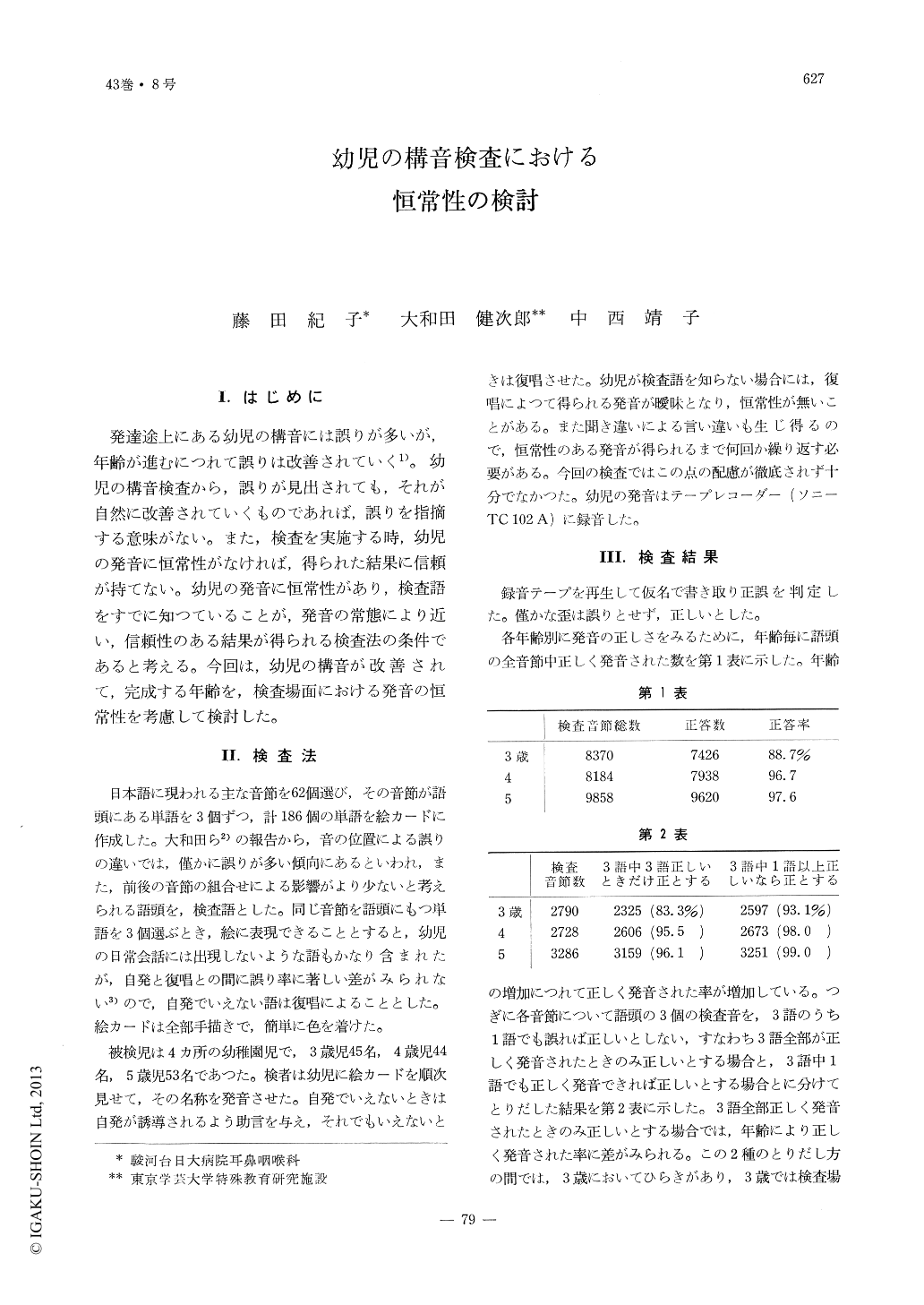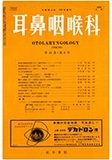Japanese
English
- 有料閲覧
- Abstract 文献概要
- 1ページ目 Look Inside
I.はじめに
発達途上にある幼児の構音には誤りが多いが,年齢が進むにつれて誤りは改善されていく1)。幼児の構音検査から,誤りが見出されても,それが自然に改善されていくものであれば,誤りを指摘する意味がない。また,検査を実施する時,幼児の発音に恒常性がなければ,得られた結果に信頼が持てない。幼児の発音に恒常性があり,検査語をすでに知つていることが,発音の常態により近い,信頼性のある結果が得られる検査法の条件であると考える。今回は,幼児の構音が改善されて,完成する年齢を,検査場面における発音の恒常性を考慮して検討した。
In order to test consistency of articulation in children between age 3 and 5, three words initiated with a test syllable were selected for each of the 62 test syllables. Thus 142 subjects were tested by 186 picture cards. Articulation was evaluated to have consistency of correctness when all the three initial sounds per test syllable were correctly pronounced. The results showed that over 90% of the subjects attained consistency of correctness in 38 syllables at age 3, 53 at age 4 and 54 at age 5. Such syllables as sɯ, se, so, tsɯ, re, dza, dzɯ, and dze were pronounced correctly with consistency by about 70 to 80% of the subjects even at age 5.

Copyright © 1971, Igaku-Shoin Ltd. All rights reserved.


